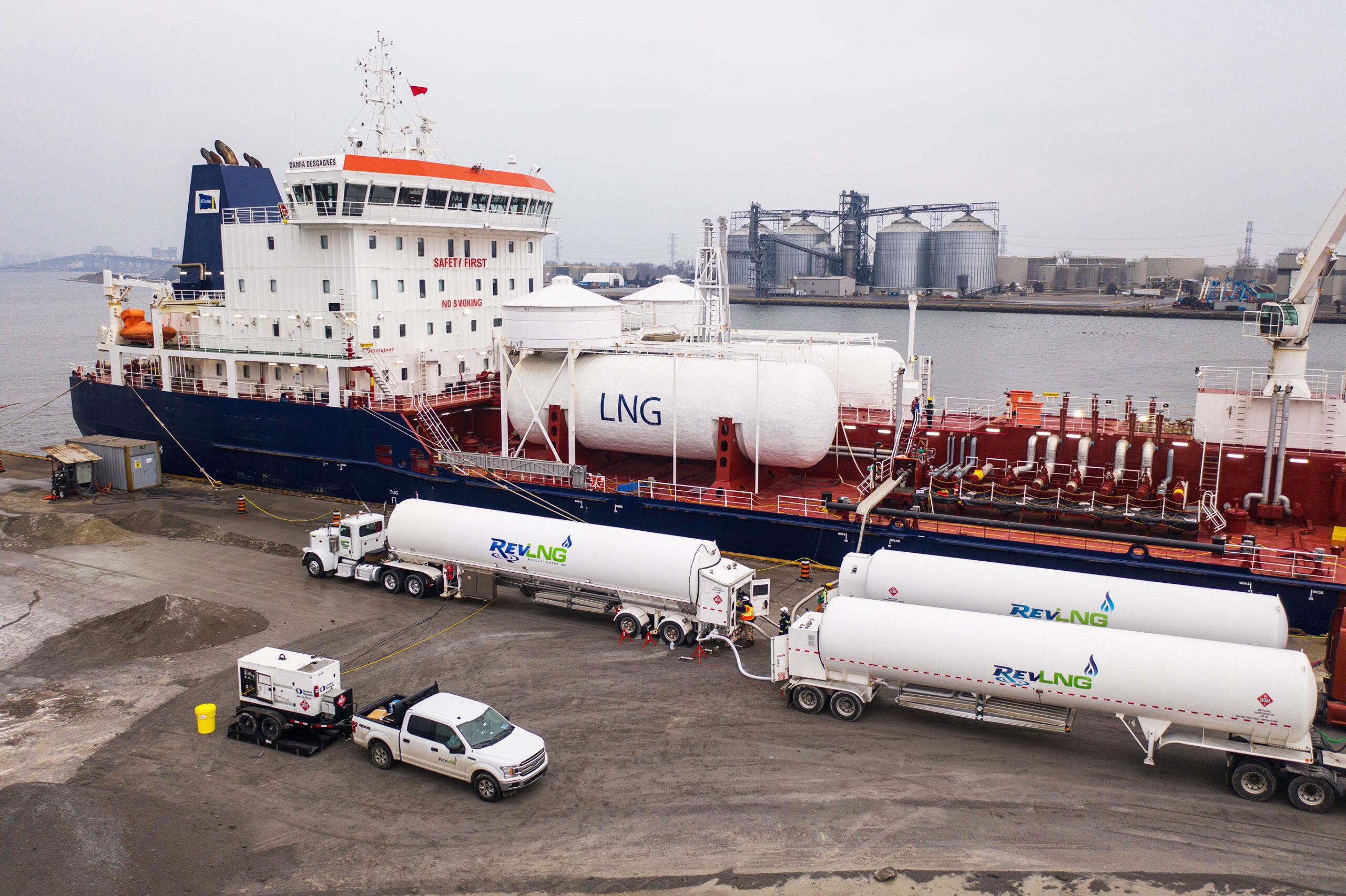
Inland and coastal shipping has tremendous opportunity to grow and support Canada’s ambitions to reduce carbon emissions and mitigate climate change.
Ships are the most fuel-efficient way to move goods and produce the least amount of carbon emissions per tonne kilometre. Domestic marine shipping offers opportunities for reducing emissions from Canada’s wider transportation system, which accounts for 30% of the country’s overall emissions.
CMC Canadian ship operator members have been trailblazers in tackling greenhouse gases, spending more than $2 billion during the past 10 years on new vessels and advanced technologies that significantly reduce fuel consumption and corresponding carbon emissions. There are more than 40 new and revamped Canadian-flag ships currently sailing in the Great Lakes, St. Lawrence River and the east and Arctic coasts.
Ships are able to carry huge volumes of cargo on significantly less fuel than rail and trucks. One ship can carry as much cargo as 963 trucks.
Due to its unprecedented investment in fleet renewal, CMC’s Canadian-flag fleet, on average, can carry one tonne of cargo an incredible 360 kilometres on one litre of fuel. Recent analysis by Research and Traffic Group also shows that due to that fuel efficiency, if rail and truck were to carry the same cargo over the same distance as CMC’s fleet, there would be 31 per cent more GHG emissions from rail and 558 per cent more from trucking.


In Canada, the latest federal emissions inventory published in 2021, using 2019 data, indicates that the Canadian domestic navigation sector accounts for only 0.59 per cent of Canada’s national CO2emissions. The domestic navigation sector, as defined in the inventory, includes fishing vessels, ferries, Canadian Coast Guard and military vessels as well as cargo carriers.
CMC Members’ Fleet, which includes bulk carriers, tankers and articulated tug-barges, accounted for 19% of that the domestic navigation sector’s emissions in 2017.
Through its collective efforts, CMC ship operators have reduced their total carbon emissions by 183,000 tonnes or 19% between 2008 and 2017 (the latest year in which data is available).

Our ship operators are committed to reducing their carbon footprint further and have been taking various measures including:
The United Nations agency that regulates global rules for safe shipping and marine environmental protection, the International Maritime Organization(IMO), has committed to reduce 50% of shipping’s GHG emissions by 2050 compared to 2008 in absolute terms. This means no matter how much the world economy expands and trade increases, marine shipping’s total GHG output in 2050 must be half of its total output from 2008.
Nationally, Canada’s goal is to reduce 30% of all its GHG emissions by 2030 from 2005 levels, with work underway on further reductions beyond this goal.
Reaching longer-term GHG reduction goals will require significant global investment in research and development and deployment of new zero-carbon technologies and propulsion systems, such as green hydrogen and ammonia, fuel cells, batteries and synthetic fuels produced from renewable energy sources. With these needs in mind, the Chamber supports the global shipping industry’s proposal for IMO to create an International Marine Research Fund, that the industry will pay into and that is expected to provide some $5 billion to support research and development for these technologies.
The Chamber will continue to work with the international shipping community and the Canadian government to advance solutions that will be effective for the industry to meet the wider goals Canadians expect.